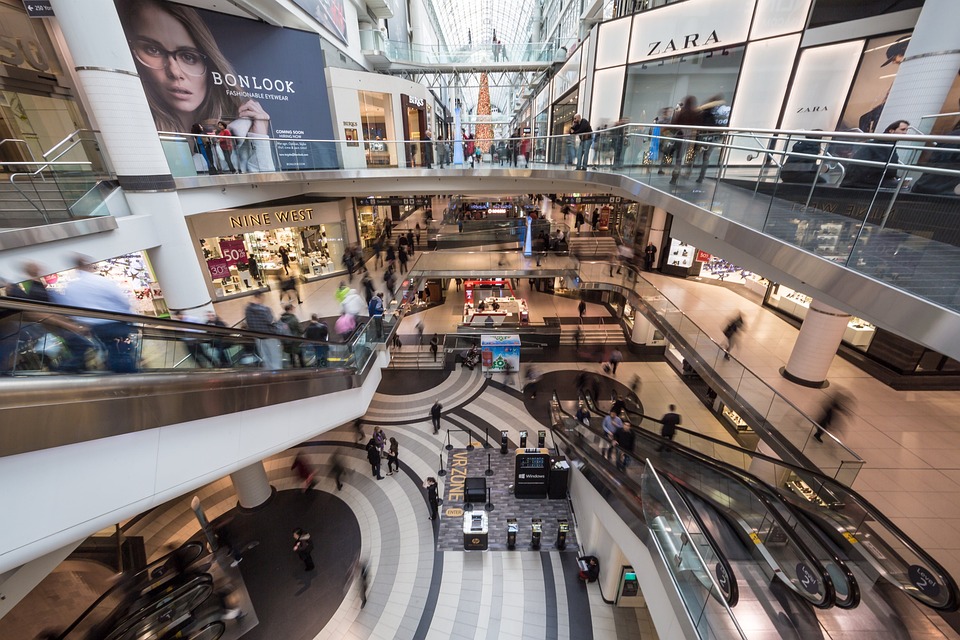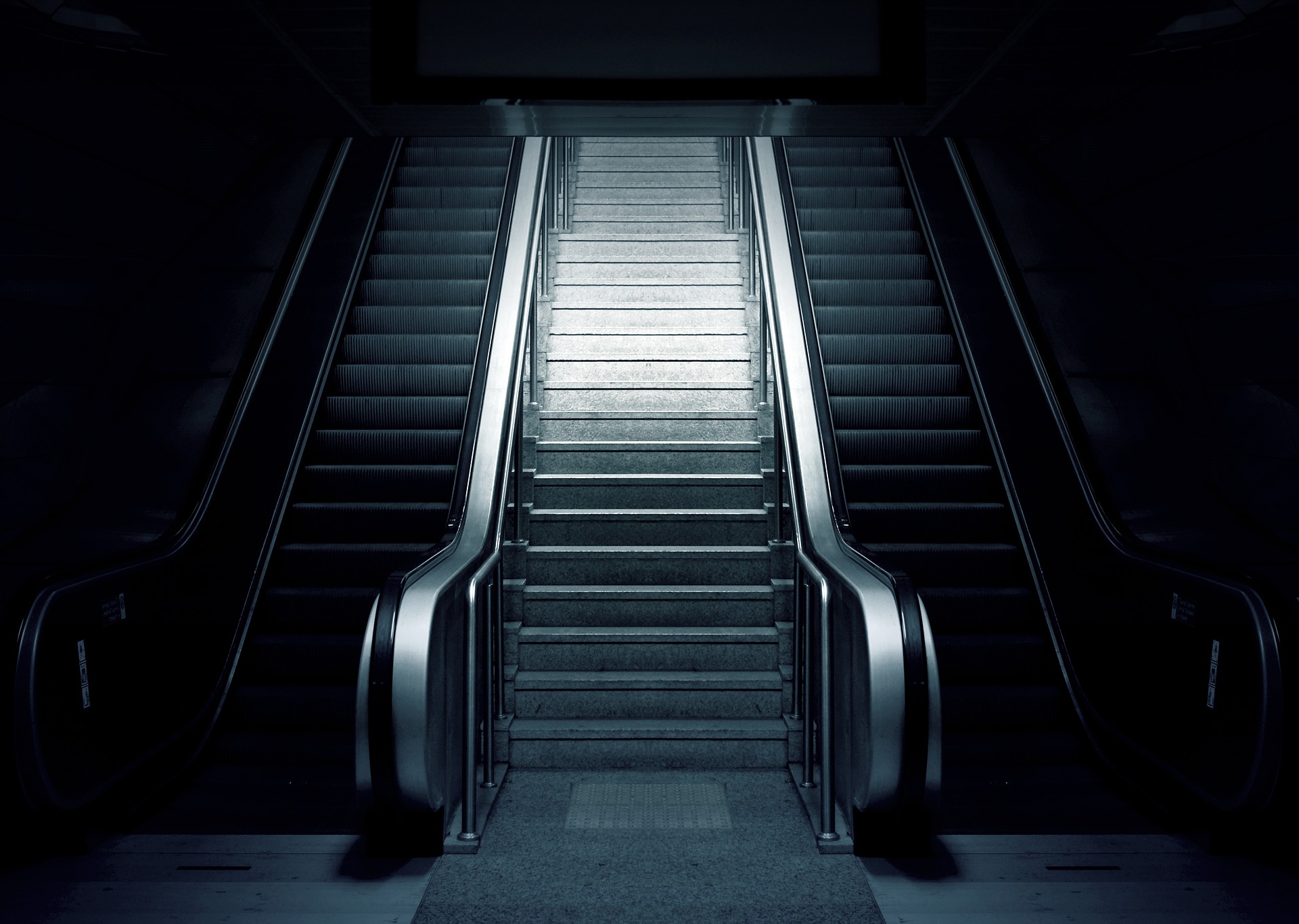Indoor wayfinding is a key part of improving people’s experience in venues and cities worldwide. However, indoor location and navigation brings with it a unique set of challenges.
In the last decade, there have been a growing number of potential technology offerings that seek to solve these challenges. Indoor navigation solutions are all about improving the ‘user’ experience of an indoor building, public space or transport hub. Therefore, the best measure of success for a wayfinding app is determined by how easily and precisely a user can reach their final destination.
Outdoor navigation is usually facilitated by time-of-flight technologies such as GPS – found in most modern smartphones. Time-of-flight technologies measure the distance to base-stations to triangulate their location. When it comes to indoor navigation, this can be done via pseudo-GPS or Ultra-wideband (UWB) systems. Both of these are affected by complex indoor environments, because the occluded and reflected signals interfere with distance calculations. This results in a low-accuracy navigation picture for those indoor users. And, whilst most users are willing to accept a variable level of accuracy for outdoor navigation, the same cannot be said for indoor navigation – a serious problem for GPS.
With GPS off the table when it comes to accurate indoor wayfinding solutions, innovators in this field must turn to alternative solutions. In this article, we take a look at what they are, and if they are truly capable of revolutionising the indoor wayfinding user experience.
The Current Solutions
Signal Strength-Based Navigation
Bluetooth Low Energy Beacons
The earliest digital indoor navigation solutions were all built around Bluetooth technology. A Bluetooth-based solution relies on the use of a number of Bluetooth Low Energy (BLE) Beacons positioned at regular intervals in an indoor location. Working on a close proximity basis, these beacons connect to a user’s phone throughout the venue and can provide relevant marketing as well as wayfinding updates.
This was a solution that found some initial popularity, particularly in airports and large shopping malls. It’s a system that has improved over time as well, as recent Bluetooth specifications such as Bluetooth 5.1 become more accurate, efficient, and cost-effective – as long as venue owners and users are able to update their hardware to match the latest specifications and protocols.
However, whilst there may be still a use for Bluetooth beacons when it comes to proximity-based marketing, its long-term use as an indoor wayfinding solution is unclear. This is because beacons work by using a received signal strength indicator (RSSI) to estimate distance. The resulting accuracy of this system can range from 3 to 45 feet, and is affected by both how the phone is carried and how many people are nearby at any one time.
Improving the accuracy for this system requires an increase in overall beacon density, with the installation of multiple sets of beacons repeating every 10 to 20 metres (or closer). A large number of beacons, however, poses a number of challenges in terms of operating costs, due to their purchase, installation and maintenance. Further, for a significantly large indoor space, this increase in the number of beacons may be unable to improve the location accuracy to any workable level.
Additional factors that venue owners who use beacons have to watch out for include vandalism, theft, maintenance manpower and unreliability in cold weather.
Wi-Fi Positioning System
Wi-Fi positioning systems (WPS) offers an alternative signal strength-based solution to Bluetooth beacons. Instead of relying on these beacons, WPS utilises the signals provided by existing Wi-Fi infrastructure to provide a wayfinding solution with a projected accuracy of 5 to 15 metres.
This therefore provides a potentially more accurate navigation experience than Bluetooth beacons. As a result, this system has seen some impressive uptake, particularly in the US where some large companies and popular indoor locations have utilised this technology in order to provide an enhanced mapping experience.
The main advantages of WPS systems are the increased accuracy and the simpler infrastructure setup, when compared to Bluetooth-based offerings. The actual accuracy of Wi-Fi based indoor navigation systems will, however, be dependent on many factors, and therefore each indoor venue may be faced with its own challenges in maintaining optimum user experience. And, in terms of infrastructure, whilst these costs will be lower than with Bluetooth beacons, they will be significant – as these Wi-Fi signals will need to be totally reliable for accurate location and mapping.
For the WPS solution to move forward, accuracy will of course have to increase. This may be possible with improvements in Wi-Fi technology that are expected to be introduced over the next few years. This, however, is entirely device dependent, with the possibility of this solution only being available to those with the latest high-end Android device.
Augmented Reality-Based Indoor Navigation
In recent years, companies have turned to AR-based navigation solutions as an alternative route into providing accurate indoor wayfinding. It has become increasingly popular in the last few years, as AR technology on the whole continues to mature.
The AR indoor navigation technology utilises visual markers placed around a venue, which are then scanned by the user’s mobile phone camera. The technology then takes these scanned markers and uses them to create a virtual ‘path’ for the user e.g. through a busy department store. This virtual path can then be displayed in a standard Google Maps-like way, or it can be presented as part of an AR experience, delivered via the user’s device camera.
Turning to the downsides of this solution – many of them come from the uncertainty of AR as a technology going forwards. It’s a fast-moving space, but many questions remain over how wide the uptake of AR will be across both the wider population and venue management, and if users have a powerful enough device to take advantage of all that AR has to offer. There is also the recurring question of infrastructure.
Whilst AR offers many benefits in this regard compared to other solutions, some issues still remain. Installing, maintaining and protecting these AR markers is no simple task, but it’s a very important one – the loss of even one marker could have a critical effect on a users ability to use this technology to guide themselves through an indoor location. This potential unreliability would present particular challenges to users who are looking for an accessibility-friendly solution.
The Waymap Solution
The above solutions focus on utilising a wide variety of external sources to help a user locate themselves in an indoor environment. The push for a more personalised navigation experience will drive particular uptake of these technologies. Each of them represents a step in the evolution of indoor navigation, with their own unique benefits and potential drawbacks – most of them based around accuracy and infrastructure of the installed beacons or markers etc.
The Waymap app, however, takes a completely different approach, delivering accurate and reliable navigation instructions without having to use any external signals or hardware at all.
In order to do this, we use the motion sensors that are already there, on the phone, such as the Barometer and the Accelerometer. We then take the data that these sensors generate, and feed it into our breakthrough revolutionary algorithm, in order to locate users to the highest level of accuracy, throughout their journey.
Waymap’s ability to locate users to an accuracy of around 3 feet location and 10 degree heading without infrastructure, using just a smartphone, solves many of the current challenges that indoor navigation poses. Maintaining this accuracy is another key feature too – indoor locations are prone to loss of signal. When you lose reception, Waymap doesn’t lose you. Where other systems leave a person in no man’s land with no signal, Waymap will continue to guide every single user.
With the entire system being based on using the sensors from people’s phones, infrastructure and maintenance costs are kept to a minimum – all that’s needed are accurate and up-to-date venue maps.
Furthermore, the Waymap solution is built around the concept of confidence. Confidence in location requires more than accurate location. It also requires accurate heading, which requires the wayfinding service to know in which direction a person is facing. Other solutions, such as signal-strength location technologies, fail to provide any heading information. This means that a user is left to rely on their smartphone compass, or GPS, both of which are notoriously inaccurate when it comes to working out the heading of a person on foot.
Confidence to set out on a journey means confidence for the entire journey, not just elements of it.
Would you like to work with us? Interested in a location near you that can benefit from Waymap’s breakthrough navigation solution? Please get in touch above.





